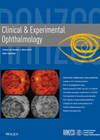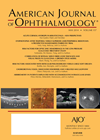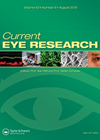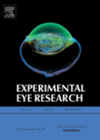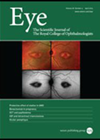
Journal Reviews archive for 2014
IOOA and DVD surgery
The authors report the results of bilateral modified inferior oblique (IO) transposition considering the equator in seven patients with infantile strabismus syndrome with inferior oblique overaction (IOOA) and dissociated vertical deviation (DVD). Mean age was 4.5 years (2-7) and mean...
Measuring IPD with PlusoptiX
The authors evaluated the accuracy of the PlusoptiX A04 for measuring pupillary distance as compared to measurements taken by a trained optician. This retrospective review included 256 children who had undilated PA04 screening and had pupil distance measurement done by...
Conversion to strabismus and amblyopia
This study was undertaken to evaluate the incidence of true manifest strabismus, the visual acuity at school screening and whether risk of failing screening is different in those discharged at first visit or followed up. The author reviewed 248 children...
Review of IDeX surgical outcome measures
The authors aimed to evaluate whether or not there exists standardisation of outcome measures amongst studies in the literature reporting results of surgery for intermittent exotropia. A 10 year literature review was conducted from 2002-2012 with extraction of English language...
Uveitis in HIV infected persons
Before the advent of highly active antiretroviral therapy (HAART), uveitis, in particular cytomegalovirus (CMV) retinitis, was the most common cause of visual loss in patients with AIDS. HAART has altered the cause of ocular disease in HIV infected individuals by...
Ranibizumab versus laser in diabetic macular oedema (LUCIDATE study)
The aim of this study was to compare the functional and structural effects of Ranibizumab versus macular laser treatment in patients with diabetic macular oedema. It was a single centre, prospective, randomised, single masked clinical trial spanning a 48 week...
The choroid in pregnancy
During pregnancy there can be different types of ocular changes including a decrease in corneal sensitivity, increase in central corneal thickness and curvature, decrease in intraocular pressure, central serous chorioretinopathy and ocular blood flow. Advances in ophthalmic imaging devices has...
MicroRNA mediate retinoblastoma signal transduction
MicroRNAs (miR) are small non-coding single-stranded RNA molecules, normally 22 nucleotides long. There is a large family of miR that control protein expression by binding to mRNAs, leading to their degradation. One important role of miR is in tumours where...
Akimba mice, a model of human diabetic retinopathy
Diabetic retinopathy (DR) is a major complication of diabetes and a growing problem as the systemic disease becomes more prevalent. DR develops insidiously from an asymptomatic form through to vascular damage that leads to oedema and breakdown of the blood-retinal...
B-scan ultrasonography
B-scan ultrasonography is commonly employed for the diagnosis and follow-up of ocular trauma. This retrospective study looked at the accuracy and predictive ability of B-scan ultrasonography following open globe repair. Of the 965 patients identified with open globe injuries at...
Early surgery for epiretinal membrane
This was a retrospective case review study in 120 consecutive patients with idiopathic epiretinal membrane. The average patient age was 72 years with a mean follow-up of 6.5 months. Inclusion criteria consisted of symptomatic patients with visual acuity of 1.0...
Resolution of mid-peripheral schisis in x-linked retinoschisis with the use of dorzolamide
X-linked retinoschisis (XLRS) is an early onset hereditary retinal dystrophy. It is caused by mutations of the RS1 gene. Common manifestations of XLRS are schitic lesions at the macula, as well as infero-temporal schisis. Carbonic anhydrase inhibitors have previously been...


